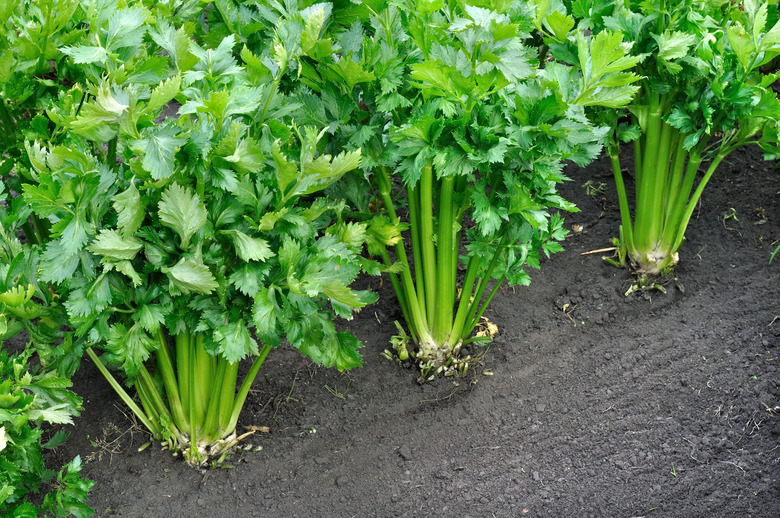Why Is Photosynthesis Important For All Organisms?
Photosynthesis is important to living organisms because it is the number one source of oxygen in the atmosphere. Without photosynthesis, the carbon cycle could not occur, oxygen-requiring life would not survive and plants would die. Green plants and trees use photosynthesis to make food from sunlight, carbon dioxide and water in the atmosphere: It is their primary source of energy. The importance of photosynthesis in our life is the oxygen it produces. Without photosynthesis there would be little to no oxygen on the planet.
TL;DR (Too Long; Didn't Read)
Photosynthesis is important for all living organisms because it provides the oxygen needed by most living creatures for survival on the planet.
Reasons Why Photosynthesis Is Important
Reasons Why Photosynthesis Is Important
- It is the number one source of oxygen in the atmosphere.
- It contributes to the carbon cycle between the earth, the oceans,
plants and animals.
- It contributes to the symbiotic relationship between plants, humans and animals.
- It directly or indirectly affects most life on Earth.
- It serves as the primary energy process for most trees and plants.
How Photosynthesis Works
How Photosynthesis Works
Photosynthesis uses light energy from the sun and carbon dioxide and water in the atmosphere to make food for plants, trees, algae and even some bacteria. It releases oxygen as a byproduct. The chlorophyll in these living organisms, which also contributes to their green hues, absorbs the sunlight and combines it with carbon dioxide to convert these compounds into an organic chemical called adenosine triphosphate (ATP). ATP is crucial in the relationship between energy and living things, and is known as the "energy currency for all life."
Importance of Cellular Respiration to Photosynthesis
Importance of Cellular Respiration to Photosynthesis
Cellular respiration allows all living cells to extract energy in the form of ATP from food and offer that energy for the vital processes of life. All living cells in plants, animals and humans take part in cellular respiration in one form or another. Cellular respiration is a three-step process. In step one, the cytoplasm of the cell breaks down glucose in a process called glycolysis, producing two pyruvate molecules from one glucose molecule and releasing a bit of ATP. In the second step, the cell transports the pyruvate molecules into the mitochondria, the energy center of the cells, without using oxygen, This is known as anaerobic respiration. The third step of cellular respiration involves oxygen and is called aerobic respiration, in which the food energy enters an electron transport chain where it produces ATP.
Cellular respiration in plants is essentially the opposite of photosynthesis. Living creatures breathe in oxygen and release carbon dioxide as a byproduct. A plant uses the carbon dioxide exhaled by animals and humans in combination with the sun's energy during cellular respiration to produce the food that it requires. Plants eventually release oxygen back into the atmosphere, resulting in a symbiotic relationship between plants, animals and humans.
Non-Photosynthetic Plants
Non-Photosynthetic Plants
While most plants use photosynthesis to produce energy, there are some that are non-photosynthetic. Plants that do not use photosynthesis to produce food are usually parasitic, which means they rely on a host for nutrient generation. Examples include Indian pipe (Monotropa uniflora) – also known as the ghost or corpse plant – and beechdrops (Epifagus americana), which steals nutrients found in beech tree roots. The Indian pipe plant is a ghostly white color because it contains no chlorophyll. Plants in the fungi kingdom – mushrooms, molds and yeasts – rely on their environment for food instead of photosynthesis.
Cite This Article
MLA
Brenner, Laurie. "Why Is Photosynthesis Important For All Organisms?" sciencing.com, https://www.sciencing.com/photosynthesis-important-organisms-6389083/. 22 November 2019.
APA
Brenner, Laurie. (2019, November 22). Why Is Photosynthesis Important For All Organisms?. sciencing.com. Retrieved from https://www.sciencing.com/photosynthesis-important-organisms-6389083/
Chicago
Brenner, Laurie. Why Is Photosynthesis Important For All Organisms? last modified March 24, 2022. https://www.sciencing.com/photosynthesis-important-organisms-6389083/
